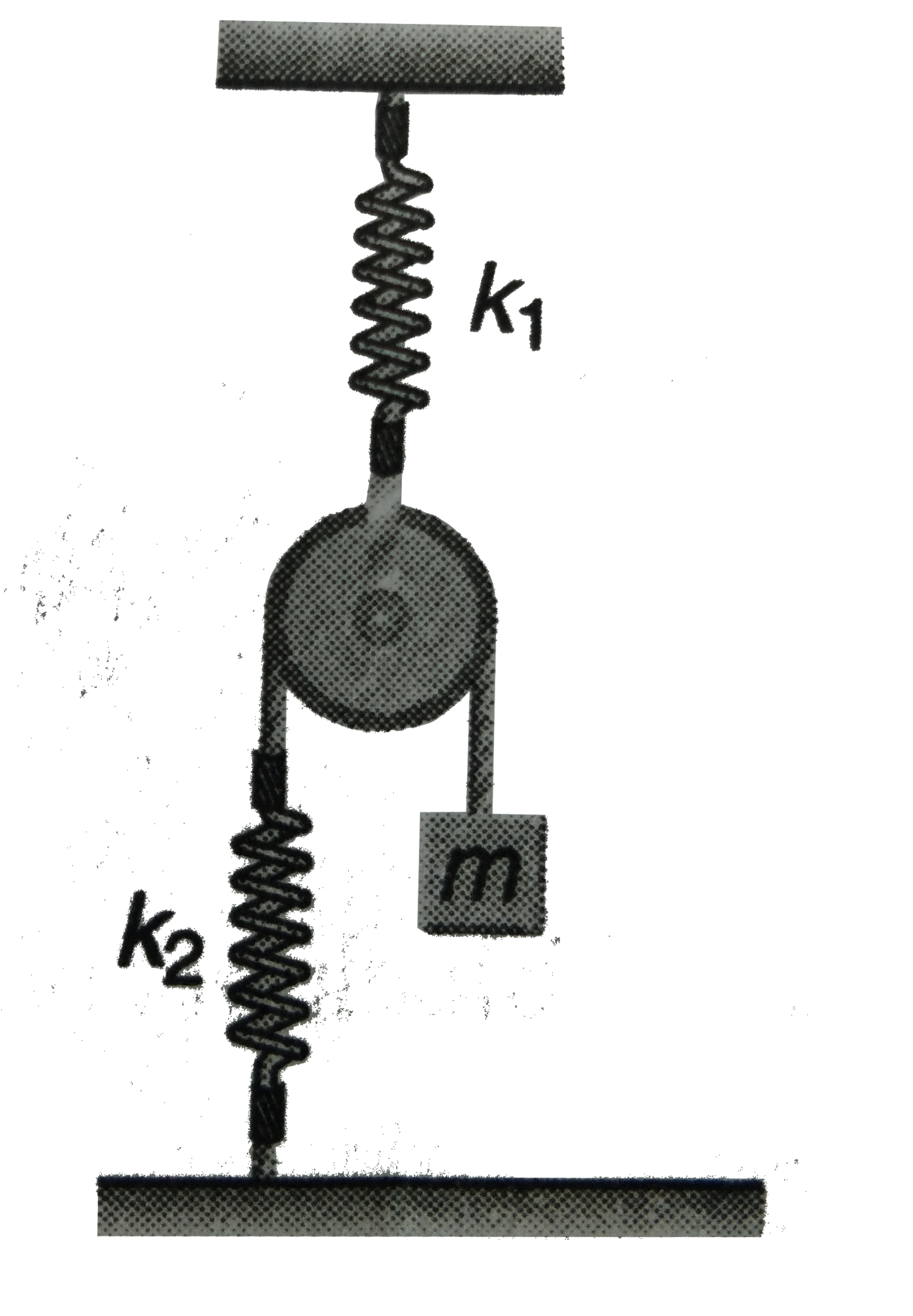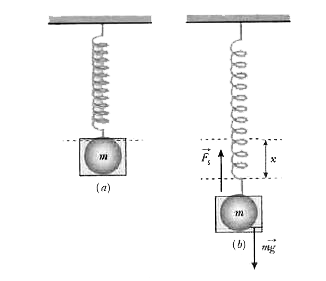The movement of an object attached to a suspended spring has
oscillatory motion
circular motion
rotational motion
rectilinear motion.
The correct Answer is:A
Object has oscillatory motion because it moves to and fro.
Topper's Solved these Questions
- MOTION AND MEASUREMENT OF DISTANCESBook:MTG IIT JEE FOUNDATIONChapter:MOTION AND MEASUREMENT OF DISTANCESExercise:EXERCISE(FILL IN THE BLANKS)
Explore 7 Videos
- MOTION AND MEASUREMENT OF DISTANCESBook:MTG IIT JEE FOUNDATIONChapter:MOTION AND MEASUREMENT OF DISTANCESExercise:EXERCISE(TRUE OR FALSE)
Explore 3 Videos
- MOTION AND MEASUREMENT OF DISTANCESBook:MTG IIT JEE FOUNDATIONChapter:MOTION AND MEASUREMENT OF DISTANCESExercise:EXERCISE(MULTIPLE CHOICE QUESTIONS LEVEL-1)
Explore 30 Videos
- LIGHT, SHADOWS AND REFLECTIONSBook:MTG IIT JEE FOUNDATIONChapter:LIGHT, SHADOWS AND REFLECTIONSExercise:OLYMPIAD/HOTS CORNER
Explore 15 Videos
Similar Questions
Motion Of An Object Attached To A Spring
View SolutionAn object is attached to a vertical springs and lowered slowly to its equilibrium position. This stretches the spring by a distance d. If the same object is attached to the same vertical spring, but permitted to fall freely, through what distance does it stretch the spring ?
View Solution
Knowledge Check
One end of an unstretched vertical spring is attached to the ceiling and an object attached to the other end is slowly lowered to its eqilibrium position. If S be gain in spring energy and G be loss in gravitational potential energy in the process, then
AS=GBS=2GCG=2SDNone of theseOne end of an unstretched vertical spring is attached to the ceiling and an object attached to the other end is slowly lowered to its equilibrium position. If S is the gain in spring energy and G is the loss in gravitational potential energy in the process, then
A(a) S=GB(b) S=2GC(c) G=2SD(d) None of the aboveFor a body of mass m attached to the spring the spring factor is given by
Am/ω2Bmω2Cm2ωDm2ω2
One end of an unstretched vertical spring is attached to the ceiling and an object attached to the other end is slowly lowered to its equilibrium position. If S is the gain in spring energy and G is the loss in gravitational potential energy in the process, then
View SolutionA light pulley is suspended at the lower end of a spring of constant k1, as shown in figure. An inextensible string passes over the pulley. At one end of string a mass m is suspended, the other end of the string is attached to another spring of constant k2. The other ends of both the springs are attached to rigid supports, as shown. Neglecting masses of springs and any friction, find the time period of small oscillations of mass m about equilibrium position.

View SolutionA light pulley is suspended at the lower end of a spring of constant k1, as shown in figure. An inextensible string passes over the pulley. At one end of string a mass m is suspended, the other end of the string is attached to another spring of constant k2. The other ends of both the springs are attached to rigid supports, as shown. Neglecting masses of springs and any friction, find the time period of small oscillations of mass m about equilibrium position.

View SolutionA massless spring hangs from the ceiling with a small object attached to its lower end. The object is initially held at rest in a position y such that the spring is at its rest length. The object is then released from y and oscillates up and down, with its lowest position being 10cm below y, (a) What is the frequency of the oscillation? (b) What is the speed of the object when it is 8.0 cm below the initial position? (c ) An object of mass 600g is attached to the first object, after which the system oscillates with half the original frequency. What is the mass of the first object? (d) How far below y, is the new equilibrium (rest) position with both objects attached to the spring?
View SolutionA mass 1 kg is attaced to the hook of a spring and the spring is suspended vertically from a ceiling (see Fig. 5.12a). The spring is displaced from its equilibrium position by a distance x. The spring constant of the spring is 2.0×102 N/m. Calculate the displacement x.

Figure 5-12 (a) Mass of 1 kg attached to a spring is suspended vertically. (b) Spring displace from equilibrium position by a distance x.
View Solution
